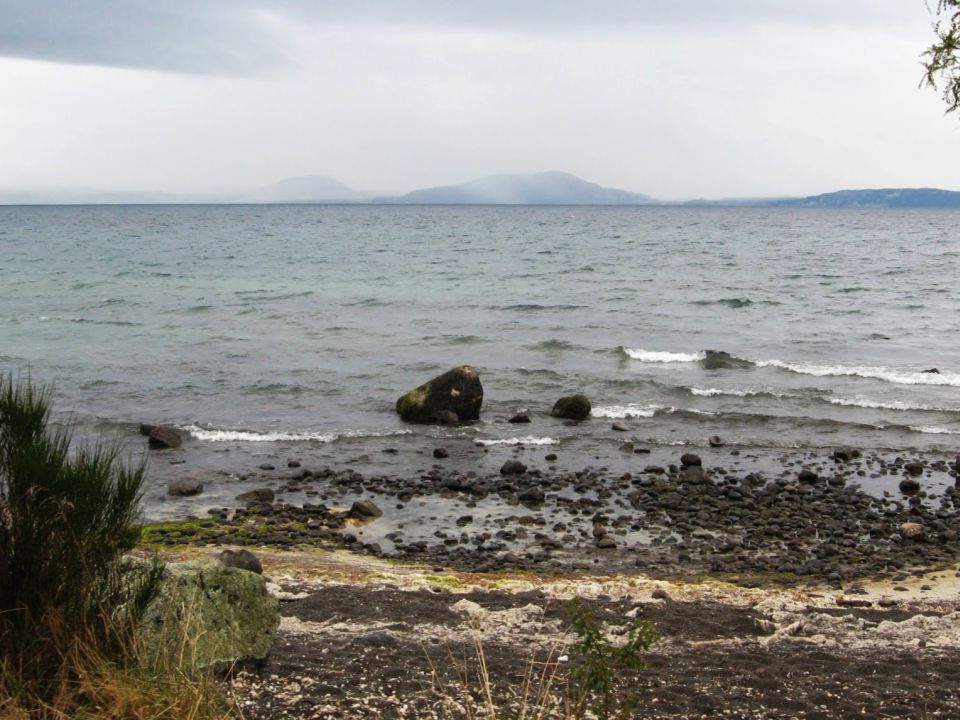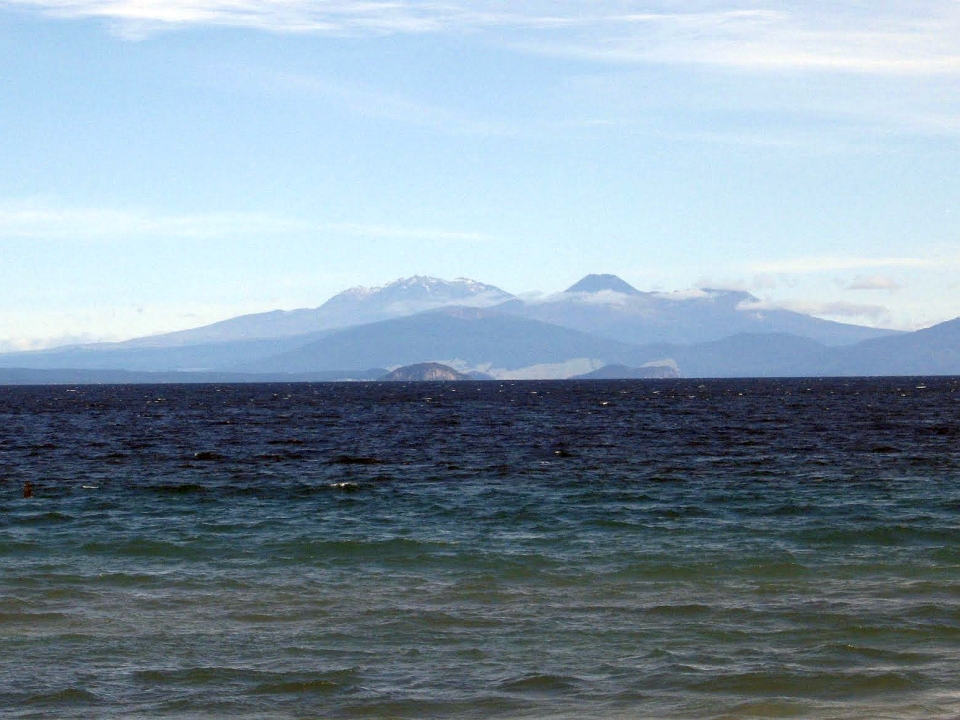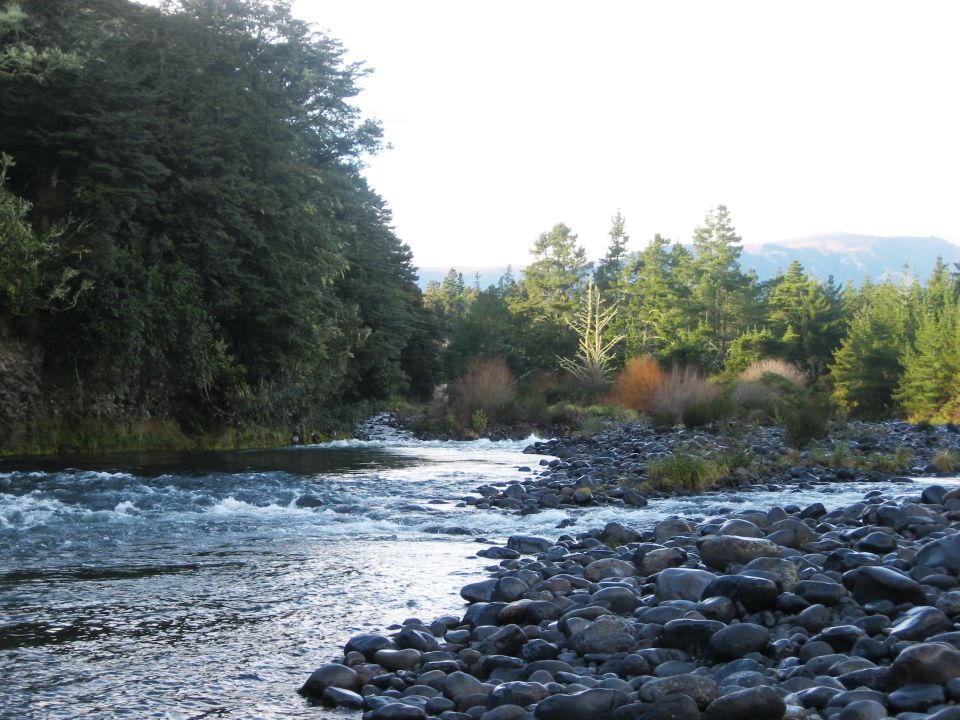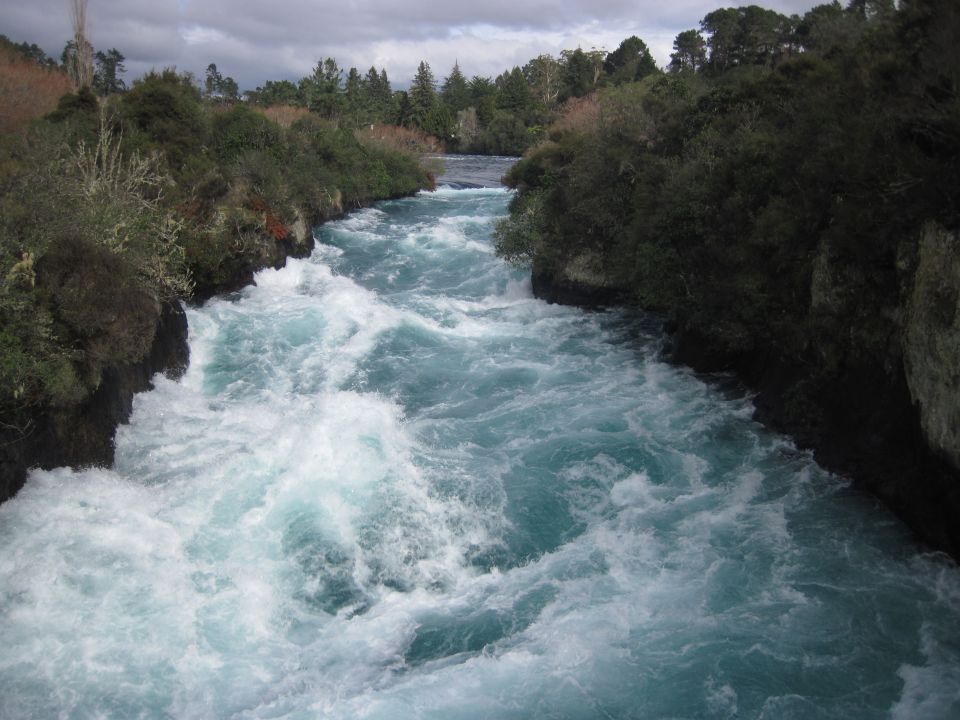Lake Taupō
Lake Taupō has a big impact on the land, plants and animals. It is the largest freshwater lake in Australasia.
There are many smaller lakes, such as Lake Rotoaira, Lake Rotopounamu and Lake Rotokawa. Like Lake Taupō they were all formed by past volcanic activity.
Streams and rivers
Large catchments like Lake Taupō are made up of many sub-catchments. About 40 streams and rivers flow into Lake Taupō. These streams and rivers are higher above sea level than Lake Taupō. The largest are the Tongariro, the Waitahanui, the Hinemaiaia, Tauranga-Taupō, Waimarino and Waiotaka.
Freshwater leaves Lake Taupō through the Waikato River. The Waikato River flows into the Tasman Sea.
A healthy catchment
A healthy catchment should be able to filter and clean water. Water, soil, plants, animals and humans are all linked within a catchment. Whatever happens in the sub-catchments affects the wellbeing of the waterways lower down.
Healthy catchments are important for human survival. They are often where our food is grown and where the water we drink comes from. Clean water is important for the Lake Taupō catchment. Many businesses rely on Lake Taupō and its surrounding freshwater environments (see Wai Tourism).








